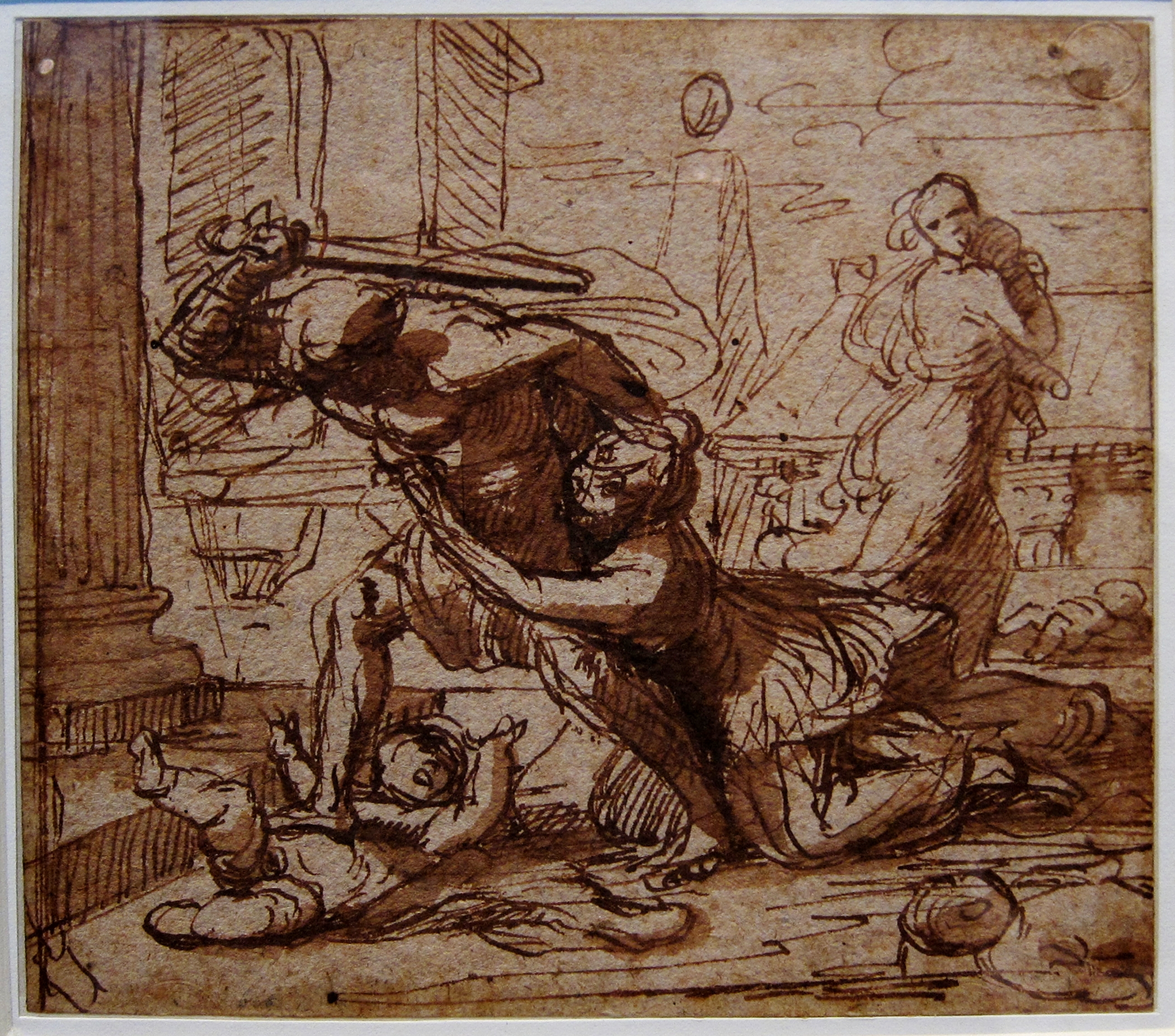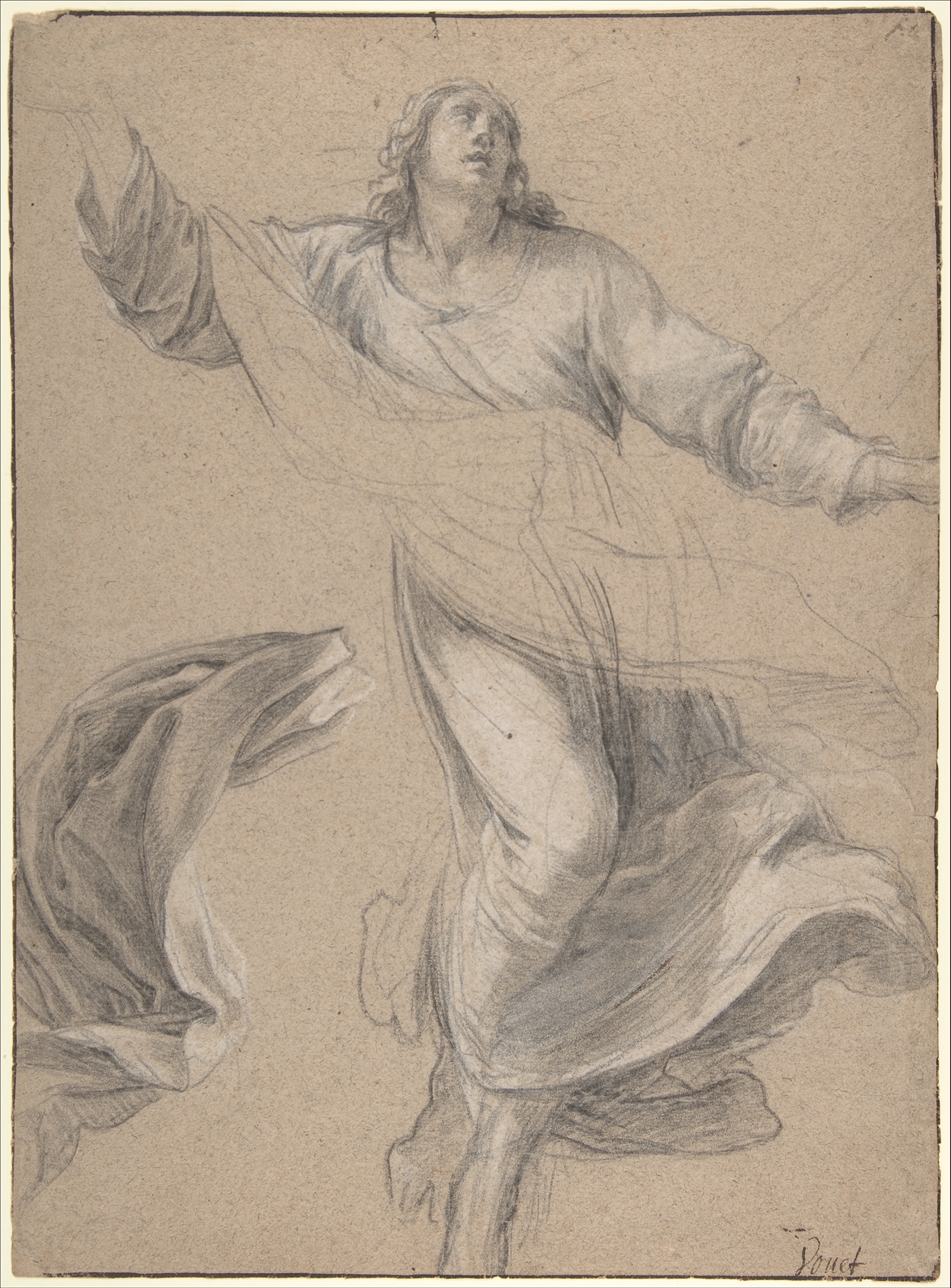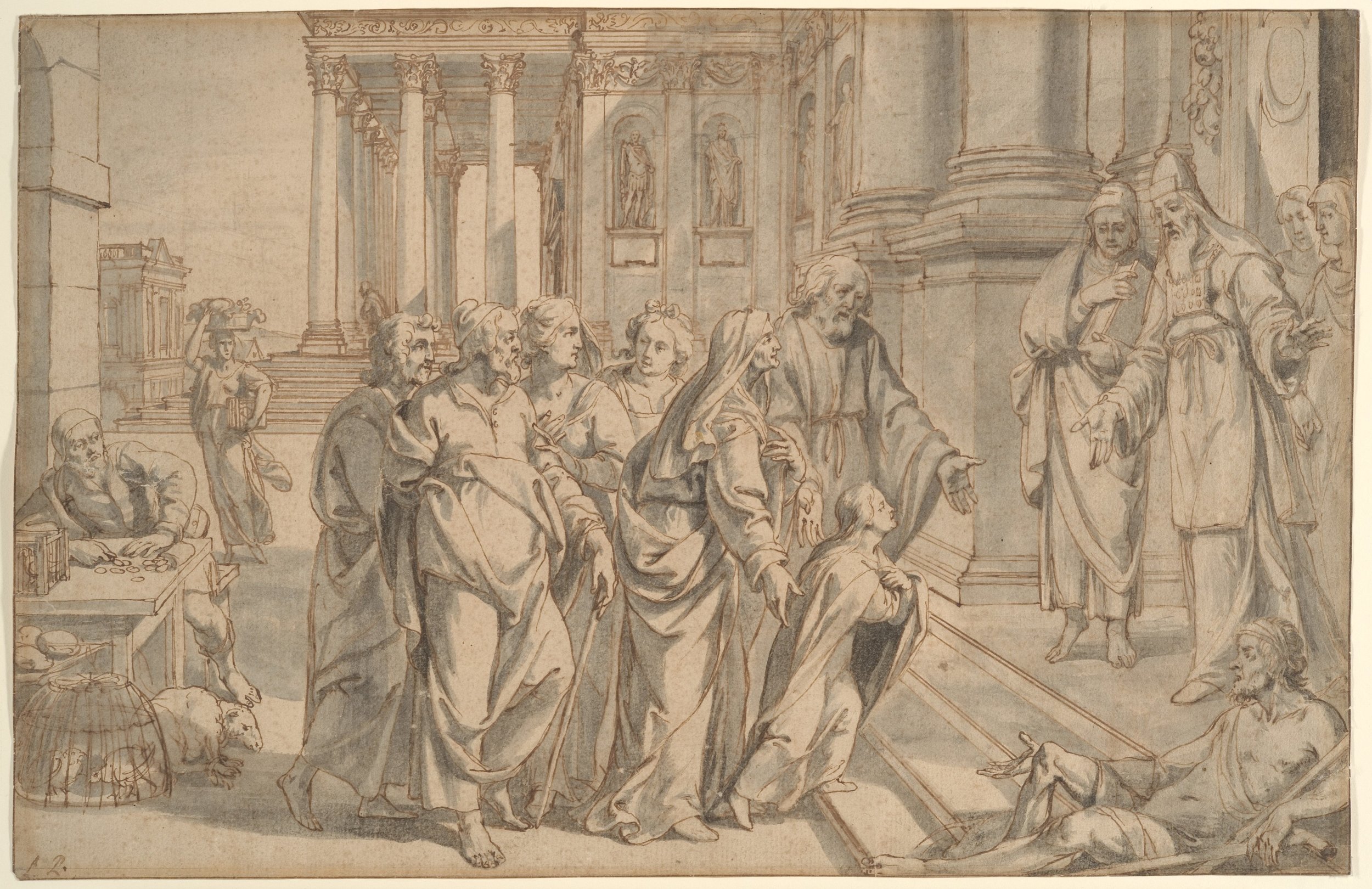
Jacques Callot, The Agony in the Garden, 1625, wash drawing, Derbyshire, Chatsworth.

Claude Lorrain, Landscape with the Rest on the Flight to Egypt, ca. 1660, pen, ink brush, ink and bister wash, heightened with white body colour on yellowish paper, Vienna, The Albertina Museum.

Claude Lorrain, Landscape with Round Tower and Bay, ca. 1635-1640, ink, Indian ink, red chalk and wash on paper, Frankfurt, Städel Museum.

Nicolas Poussin, A Dance to the Music of Time, ca. 1640, pen, brown ink and wash on paper; traces of squaring on black chalk, Edinburgh, Scottish National Gallery.

Nicolas Poussin, The Massacre of the Innocents, 1620s, pen and brown ink on white paper, Lille, Palais des Beaux-Arts de Lille.

Simon Vouet, St. Louis in Glory, ca. 1640-41, black chalk, heightened with white chalk, on beige paper, New York, The Metropolitan Museum of Art.

Charles Le Brun, Allegory in Honour of Cardinal Richelieu, 1641, black chalk, traces of stumping, brush and black and grey wash on paper, New York, Metropolitan Museum of Art.

Charles Le Brun, Design for the Cupola of the Grand Salon of the Château de Vaux-le-Vicomte, late 1650s, pen and ink with wash, Paris, Musée du Louvre.

Philippe de Champaigne, The Presentation of the Virgin, 17th century, black chalk, pen and brown ink, brush and grey wash on paper, New York, Metropolitan Museum of Art.

Philippe de Champaigne, Portrait of Charlotte Duchesne, ca. 1628, black chalk, heightened with white, with touches of red chalk on paper, New York, Metropolitan Museum of Art.

Charles Le Brun, Physiognomic Heads Inspired by a Weasel, ca. 1670, pen and wash on paper, Paris, Musée du Louvre.
Le Brun was very interested in physiognomy, the practice of assessing a person’s character on the basis of his or her physical features, and the expression of “passions” such as hope and fear in the human face. He gave lectures in the new French Académie royale de peinture et de sculpture both on the correlation between human and animal faces, and on emotion in paintings, published posthumously in Méthode pour apprendre à dessiner les passions (1698).










